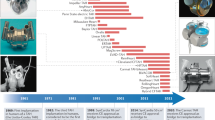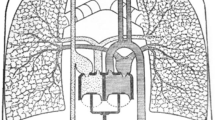Abstract
A series of guidelines for development and assessment of next-generation medical devices has been drafted under an interagency collaborative project by the Ministry of Health, Labor and Welfare and the Ministry of Economy, Trade and Industry. The working group for assessment guidelines of next-generation artificial hearts reviewed the trend in the prevalence of heart failure and examined the potential usefulness of such devices in Japan and in other countries as a fundamental part of the process of establishing appropriate guidelines. At present, more than 23 million people suffer from heart failure in developed countries, including Japan. Although Japan currently has the lowest mortality from heart failure among those countries, the number of patients is gradually increasing as our lifestyle becomes more Westernized; the associated medical expenses are rapidly growing. The number of heart transplantations, however, is limited due to the overwhelming shortage of donor hearts, not only in Japan but worldwide. Meanwhile, clinical studies and surveys have revealed that the major causes of death in patients undergoing long-term use of ventricular assist devices (VADs) were infection, thrombosis, and mechanical failure, all of which are typical of VADs. It is therefore of urgent and universal necessity to develop next-generation artificial hearts that have excellent durability to provide at least 2 years of event-free operation with a superior quality of life and that can be used for destination therapy to save patients with irreversible heart failure. It is also very important to ensure that an environment that facilitates the development, testing, and approval evaluation processes of next-generation artificial hearts be established as soon as possible.
Similar content being viewed by others
References
JG Cleland A Khand A Clark (2001) ArticleTitleThe heart failure epidemic: exactly how big is it? Eur Heart J 22 IssueID8 623–626 Occurrence Handle11286518 Occurrence Handle10.1053/euhj.2000.2493 Occurrence Handle1:STN:280:DC%2BD3M3gtVehuw%3D%3D
D Levy S Kenchaiah MG Larson EJ Benjamin MJ Kupka KK Ho JM Murabito RS Vasan (2002) ArticleTitleLong-term trends in the incidence of and survival with heart failure N Engl J Med 347 IssueID18 1397–1402 Occurrence Handle12409541 Occurrence Handle10.1056/NEJMoa020265
T Thom N Haase W Rosamond VJ Howard J Rumsfeld T Manolio Z-J Zheng K Flegal CO Donnell S Kittner D Lloyd-Jones DC Goff SuffixJr Y Hong (2006) ArticleTitleHeart disease and stroke statistics – 2006 update. A report from the American Heart Association Statistics Committee and Stroke Statistics Subcommittee Circulation 113 e85–e151 Occurrence Handle16407573 Occurrence Handle10.1161/CIRCULATIONAHA.105.171600
Summary of patient survey, 2002. Vital Statistics Division, Statistics and Information Department, Minister's Secretariat, Ministry of Health, Labor and Welfare. http://www.mhlw.go.jp/toukei/saikin/hw/kanja/02syoubyo/ (accessed Nov 30, 2006)
Summary of vital statistics, 2005. Vital Statistics Division, Statistics and Information Department, Minister's Secretariat, Ministry of Health, Labor and Welfare. http://www.mhlw.go.jp/toukei/saikin/hw/jinkou/kakutei05/ (accessed Nov 30, 2006)
Summary of statistics on mortalities from heart and cerebrovascular diseases. Vital Statistics Division, Statistics and Information Department, Minister's Secretariat, Ministry of Health, Labor and Welfare. http://www.mhlw.go.jp/toukei/saikin/hw/jinkou/tokusyu/sinno05/ (accessed Nov 30, 2006)
National medical care expenditure estimate, FY2003. Vital Statistics Division, Statistics and Information Department, Minister's Secretariat, Ministry of Health, Labor and Welfare. http://www.mhlw.go.jp/toukei/saikin/hw/k-iryohi/03/ (accessed Nov 30, 2006)
Cumulative number of registered patients (as at Oct 31, 2006). Japan Organ Transplant Network. http://www.jotnw.or.jp/datafile/ (accessed Nov 30, 2006)
Committee to Evaluate the Artificial Heart Program of the National Heart, Lung, and Blood Institute, Division of Health Care Service, Institute of Medicine. The artificial heart: prototypes, policies, and patients. Hogness JR, Van Antwerp M (eds), Washington, DC: National Academy Press, 1991
EA Rose AC Gelijns AJ Moskowitz DF Heitjan LW Stevenson W Dembitsky JW Long DD Ascheim AR Tierney RG Levitan JT Watson P Meier NS Ronan PA Shapiro RM Lazar LW Miller L Gupta OH Frazier P Desvigne-Nickens MC Oz VL Poirier InstitutionalAuthorNameRandomized Evaluation of Mechanical Assistance for the Treatment of Congestive Heart Failure (REMATCH) Study Group (2001) ArticleTitleLong-term mechanical left ventricular assistance for end-stage heart failure N Engl J Med 345 1435–1443 Occurrence Handle11794191 Occurrence Handle10.1056/NEJMoa012175 Occurrence Handle1:STN:280:DC%2BD38%2FmsFGnsQ%3D%3D
MC Deng LB Edwards MI Hertz AW Rowe BM Keck R Kormos DC Naftel JK Kirklin DO Taylor (2005) ArticleTitleMechanical circulatory support device database of the International Society for Heart and Lung Transplantation: third annual report – 2005 J Heart Lung Transplant 24 1182–1187 Occurrence Handle16143231 Occurrence Handle10.1016/j.healun.2005.07.002
Registry Report 2006. Osaka: Japanese Association for Clinical Ventricular Assist Systems
T Nakatani (2006) ArticleTitleOrgan transplantation: heart transplantation Sougou Rinsyou 55 2053–2062
Heart Transplantation. Japan Organ Transplant Network Newsletter 2005;9:5–6
E Braunwald (2003) Foreword, Heart failure: the last battleground JJ McMurry MA Pfeffer (Eds) Heart failure update Martin Dunitz New York
Author information
Authors and Affiliations
Corresponding author
Additional information
Working Group on Establishment of Assessment Guidelines for Active Implantable Medical Devices: Next-Generation Artificial Heart System, Inter-agency Committee for the Guideline Program, the Ministry of Health, Labour and Welfare of Japan and the Ministry of Economy, Trade and Industry of Japan, Tokyo, Japan
Rights and permissions
About this article
Cite this article
Tatsumi, E., Nakatani, T., Imachi, K. et al. Domestic and foreign trends in the prevalence of heart failure and the necessity of next-generation artificial hearts: a survey by the Working Group on Establishment of Assessment Guidelines for Next-Generation Artificial Heart Systems. J Artif Organs 10, 187–194 (2007). https://doi.org/10.1007/s10047-007-0384-1
Received:
Accepted:
Published:
Issue Date:
DOI: https://doi.org/10.1007/s10047-007-0384-1




